 Libri di Peter Pringle su Unilibro.it
)
Libri di Peter Pringle su Unilibro.it
)
|
|
2023 |
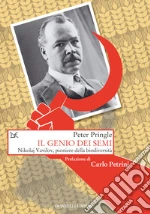 Title :
Il genio dei semi. Nikolaj Vavilov, pioniere della biodiversità
Title :
Il genio dei semi. Nikolaj Vavilov, pioniere della biodiversitàAuthor: Pringle Peter Publisher: Donzelli In un dramma degno del Dottor Zivago, nel quale si intrecciano scienza, amori, rivoluzioni e guerre, Peter Pringle ricostruisce la storia di Nikolaj Vavilov, lo scienziato che, agli albori della genetica, sognava di sconfiggere la fame nel mondo coltivando piante in grado di sopravvivere in ogni condizione climatica e ad ogni latitudine, nei deserti di sabbia e tra i ghiacci della tundra, e gettando così le basi per un grandioso progetto di raccolta e conservazione della biodiversità alimentare. Il progetto pionieristico di Vavilov si inscriveva nella grande utopia dei primi rivoluzionari bolscevichi, che non esitarono a finanziare le sue spedizioni nei cinque continenti alla ricerca di quelle centinaia di migliaia di semi che avrebbero dato vita a un meraviglioso museo vivente della varietà delle specie botaniche. Alla morte di Lenin, però, il sogno di Vavilov si trasformò in un incubo. La sua indipendenza di pensiero, la fedeltà alla scienza e i rapporti con studiosi di tutto il mondo ne decretarono l'emarginazione da parte degli scienziati fedeli a Stalin, che con l'aiuto della polizia segreta montarono contro di lui un corposo dossier di accuse di sabotaggio e spionaggio, impedendogli di fatto di portare avanti le sue ricerche. E così, l'uomo che sognava di sfamare il pianeta fu una delle vittime più illustri delle purghe staliniane, condannato - per una sorte tragicamente ironica - a morire di fame nelle prigioni sovietiche. Attraverso documenti inediti degli archivi dell'Urss, tra cui il dossier della polizia segreta contro Vavilov, Peter Pringle ricostruisce la trama € 28,00
Scontato: € 26,60
|
|
|
1913 |
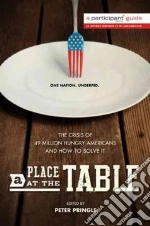 Title :
A Place at the Table
Title :
A Place at the TableAuthor: Pringle Peter (COR) Publisher: Public Affairs Forty-nine million people—including one in four children—go hungry in the U.S every day, despite our having the means to provide nutritious, affordable food for all. The documentary Finding North examines this issue by interweaving the stories of three people who are struggling with food insecurity with insights from food experts and activists. The Los Angeles Times called it 'moving… [it] forcefully makes the case that hunger has serious economic, social, and cultural implications for the nation.' Expanding on the film's themes, the book Finding North includes essays from food and hunger activists and reformers, outlining how to get involved now in innovative ways to reshape the American welfare system. Ultimately, it shows us how hunger poses a deep threat to our nation, and how it can be solved once and for all, if the American public decides—as they have in the past—that making healthy food available and affordable is in the best interest of us all. € 14,30
|
|
|
1912 |
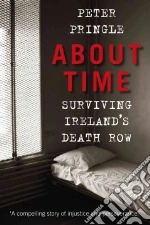 Title :
About Time
Title :
About TimeAuthor: Pringle Peter Publisher: History Pr Ltd Law and justice are not always one and the same. On November 27, 1980, Peter Pringle waited in an Irish court to hear the following words: 'Peter Pringle, for the crime of capital murder . . . the law prescribes only one penalty, and that penalty is death.' The problem was that Peter did not commit this crime. Facing a sentence of death by hanging, Peter sought the inner strength and determination to survive. When his sentence was changed to forty years without remission he set out to prove his innocence. Fifteen years later, he is finally a free man. This is his story. € 25,90
|
|
|
1911 |
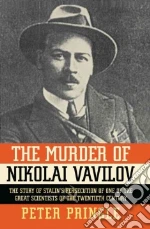 Title :
The Murder of Nikolai Vavilov
Title :
The Murder of Nikolai VavilovAuthor: Pringle Peter Publisher: Simon & Schuster In The Murder of Nikolai Vavilov, acclaimed journalist and author Peter Pringle recreates the extraordinary life and tragic end of one of the great scientists of the twentieth century. In a drama of love, revolution, and war that rivals Pasternak's Dr. Zhivago, Pringle tells the story of a young Russian scientist, Nikolai Vavilov, who had a dream of ending hunger and famine in the world. Vavilov's plan would use the emerging science of genetics to breed super plants that could grow anywhere, in any climate, in sandy deserts and freezing tundra, in drought and flood. He would launch botanical expeditions to find these vanishing genes, overlooked by early farmers ignorant of Mendel's laws of heredity. He called it a 'mission for all humanity.' To the leaders of the young Soviet state, Vavilov's dream fitted perfectly into their larger scheme for a socialist utopia. Lenin supported the adventurous Vavilov, a handsome and seductive young professor, as he became an Indiana Jones, hunting lost botanical treasures on five continents. In a former tsarist palace in what is now St. Petersburg, Vavilov built the world's first seed bank, a quarter of a million specimens, a magnificent living museum of plant diversity that was the envy of scientists everywhere and remains so today. But when Lenin died in 1924 and Stalin took over, Vavilov's dream turned into a nightmare. This son of science was from a bourgeois background, the class of society most despised and distrusted by the Bolsheviks. The new cadres of comrade scientists taunted and insulted him, and Stalin's dreaded secret police built up false charges of sabotage and espionage. Stalin's collectivization of farmland caused chaos in Soviet food production, and millions died in widespread famine. Vavilov's master plan for improving Soviet crops was designed to work over decades, not a few years, and he could not meet Stalin's impossible demands for immediate results. In Stalin's Terror of the 1930s, Russian geneticists were systematically repressed in favor of the peasant horticulturalist Trofim Lysenko, with his fraudulent claims and speculative theories. Vavilov was the most famous victim of this purge, which set back Russian biology by a generation and caused the country untold harm. He was sentenced to death, but unlike Galileo, he refused to recant his beliefs and, in the most cruel twist, this humanitarian pioneer scientist was starved to death in the gulag. Pringle uses newly opened Soviet archives, including Vavilov's secret police file, official correspondence, vivid expedition reports, previously unpublished family letters and diaries, and the reminiscences of eyewitnesses to bring us this intensely human story of a brilliant life cut short by anti-science demagogues, ideology, censorship, and political expedience. € 18,40
|
|
|
1910 |
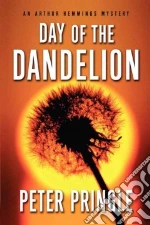 Title :
Day of the Dandelion
Title :
Day of the DandelionAuthor: Pringle Peter Publisher: Simon & Schuster Seeds of a new corn plant are stolen from Oxford University's botany lab, and the professor, Alastair Scott, and his Russian assistant, Tanya Petrovskaya, are missing. Alarms ring in London and Washington, where intelligence officials know that Scott was working on a supergene that could allow control over the world's entire food supply. The British government calls in Arthur Hemmings from the Royal Botanic Gardens at Kew. To his coworkers, Hemmings is just another researcher in the herbarium, but for many years he has been a secret service agent, an outwardly rumpled but dashing covert adventurer. Officials see a Moscow plot. Has Scott been kidnapped? Is he dead? Have Scott and Tanya fled to Russia? And why is Oxford's vice-chancellor withholding vital information? The intrepid Hemmings follows a series of clues into the cutthroat world of international patents, where the hunt for priceless genes is always nasty and often deadly. In Arthur Hemmings, Pringle has created an original heartbreaker of a hero, a botanist detective with a dash of James Bond. Facing murderous threats, Hemmings investigates fearlessly and with devastating precision. Handsome, witty, an ambitious cook, and a wine lover, he is irresistible to a much younger American female researcher. Day of the Dandelion is a seductive modern hybrid of the thrillers of Graham Greene and the adventure novels of Ian Fleming, filled with political, scientific, and commercial intrigue, and laced with miracle plants, deadly toxins, kidnappings, and car chases. It will keep the reader in suspense and amused from prelude to postscript. € 16,20
|
|
|
2009 |
 Title :
The Churches of the Crusader Kingdom of Jerusalem
Title :
The Churches of the Crusader Kingdom of JerusalemAuthor: Pringle Denys, Leach Peter E. (ILT) Publisher: Cambridge Univ Pr This is the fourth and final volume in a series which presents a complete corpus of all the church buildings that were built, rebuilt or simply in use in the Crusader Kingdom of Jerusalem between the capture of Jerusalem by the First Crusade in 1099 and the loss of Acre in 1291. This volume deals with the major coastal cities of Acre and Tyre, which were both in Frankish hands for almost two centuries, and also contains addenda and corrigenda to volumes 1-3. It describes and discusses some 120 churches and chapels that are attested by documentary or surviving evidence, accompanied where possible by plans, elevation drawings and photographs. This is an indispensable work of reference to all those concerned with the medieval archaeology of the Holy Land, the history of the Church in the Crusader Kingdom of Jerusalem and the art and architecture of the Latin East. € 302,80
|
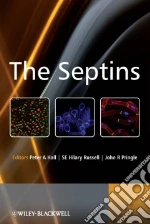 Title :
The Septins
Title :
The SeptinsAuthor: Hall Peter A., Russell S. E. Hilary, Pringle John R. Publisher: John Wiley & Sons Inc 'The authors represent most of the key figures and the work and the book as a whole is an essential reference for the newcomer or specialist in this area and for any student of eukaryotic cell structure and function. This is an important and wonderful reference.' –Microbiology Today, May 2009 Septins are an evolutionarily conserved group of GTP-binding and filament-forming proteins that were originally discovered in yeast. Once the preserve of a small band of yeast biologists, the field has grown rapidly in the past few years and now encompasses the whole of animal and fungal biology. Furthermore, septins are nowadays recognized to be involved in a variety of disease processes from neoplasia to neurodegenerative conditions. This book comprehensively examines the septin gene family and their proteins, providing those new to this research area with a detailed and wide ranging introduction to septin biology. It starts with a unique historical perspective on the development of the field, from its beginnings in the screen for cell division mutants by the Nobel Laureate Lee Hartwell. The evolution of the septin gene family then forms a basis for consideration of the biochemistry and functions of septins in yeast and other model organisms including C. elegans and Drosophila. A major part of the book considers the diversity of septins in mammals, their functions and properties as well as their involvement in normal and abnormal cellular states, followed by a speculative overview from the editors of the key questions in septin research and of where the field may be headed. In addition, several appendices summarise important information for those in, or just entering, the field, e.g. nomenclature and septin and septin-like sequences. This book is an essential source of reference material for researchers in septin biology, cell biology, genetics and medicine, in particular pathology, including areas of neurobiology, oncology, infectious disease and developmental biology. € 184,00
|
|
2006 |
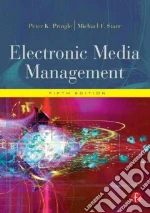 Title :
Electronic Media Management
Title :
Electronic Media ManagementAuthor: Pringle Peter K., Starr Michael F. Publisher: Focal Pr The fifth edition of a classic text features important updates that reflect the enormous changes that have taken place in recent years - the Internet as an important information transmission format that is here to stay and convergence among media. This edition features thorough discussions on the Internet and convergence, as well as reflects the latest information on broadcast and cable regulations and policies. It also includes a fresh batch of case studies, and study questions. As in previous editions, this book also covers management theory, audience analysis, broadcast promotion, and marketing. *The most complete book on broadcast and cable management *The only book that examines the management of non-commercial radio and television stations *The only book that examines ways of assuming ownership of a broadcast station or cable system € 89,30
|
|
|
2005 |
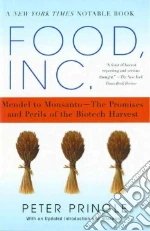 Title :
Food, Inc.
Title :
Food, Inc.Author: Pringle Peter Publisher: Simon & Schuster For most people, the global war over genetically modified foods is a distant and confusing one. The battles are conducted in the mystifying language of genetics. A handful of corporate 'life science' giants, such as Monsanto, are pitted against a worldwide network of anticorporate ecowarriors like Greenpeace. And yet the possible benefits of biotech agriculture to our food supply are too vital to be left to either partisan. The companies claim to be leading a new agricultural revolution that will save the world with crops modified to survive frost, drought, pests, and plague. The greens warn that 'playing God' with plant genes is dangerous. It could create new allergies, upset ecosystems, destroy biodiversity, and produce uncontrollable mutations. Worst of all, the antibiotech forces say, a single food conglomerate could end up telling us what to eat. In Food, Inc., acclaimed journalist Peter Pringle shows how both sides in this overheated conflict have made false promises, engaged in propaganda science, and indulged in fear-mongering. In this urgent dispatch, he suggests that a fertile partnership between consumers, corporations, scientists, and farmers could still allow the biotech harvest to reach its full potential in helping to overcome the problem of world hunger, providing nutritious food and keeping the environment healthy. € 15,40
|
|
|
2002 |
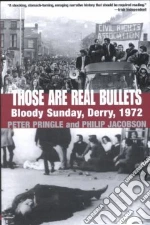 Title :
Those Are Real Bullets
Title :
Those Are Real BulletsAuthor: Pringle Peter, Jacobson Philip Publisher: Grove Pr On January 30, 1972, British paratroopers opened fire on unarmed Irish Catholic demonstrators in Derry, killing thirteen and wounding another fourteen. Five were shot in the back. A major turning point in the recent history of Northern Ireland, the massacre galvanized Catholics in their struggle against the British presence in Ulster. In Those Are Real Bullets, Peter Pringle and Philip Jacobson provide the definitive, full-length narrative account of Bloody Sunday. Using extensive interviews and recently declassified documents unavailable for previous books about the shootings, they vividly re-create the chaos and terror of the day and capture the full human impact of the tragedy. Those Are Real Bullets provides an intimate portrait of a city in revolt and the climax of a failed military response that plunged Northern Ireland into three decades of armed conflict. 'A shocking, stomach-turning, enraging narrative history that should be required reading.' -- Irish Independent 'Written by two veteran, first-rate reporters, this book will remain the standard account of that miserable day.' -- Geoffrey Wheatcroft, Daily Mail € 14,30
|